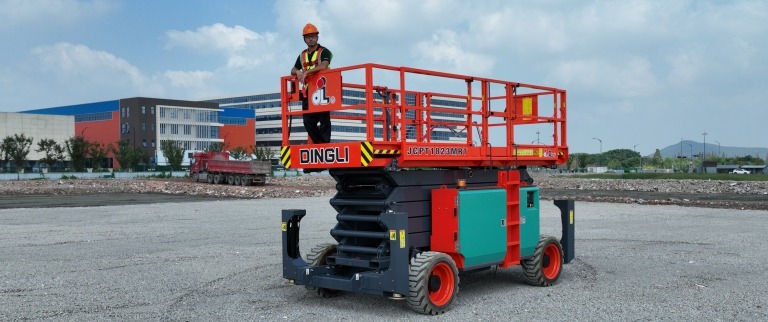In today’s fast-paced industrial landscape, access equipment like
scissor lifts and boom lifts play a vital role in ensuring safe and efficient vertical mobility. Among these, scissor lifts are especially valued for their vertical reach, platform stability, and compact design—making them indispensable across a wide range of industries. Whether you’re working on a high-ceilinged warehouse, a commercial building facade, or indoor maintenance, scissor lifts offer a reliable and safer alternative to ladders or scaffolding.
In this blog, we’ll explore how scissor lifts are transforming workflows in construction, warehousing, and facility maintenance, and how they compare with other equipment like boom lift articulating and boom lift telescopic models.
1. Construction: Safe Vertical Access on Busy Job Sites
In construction environments, scissor lifts are commonly used for interior tasks such as electrical, plumbing, drywall, and HVAC installations. Their ability to provide a stable, elevated platform makes them ideal for workers handling tools and materials at heights up to 40 feet or more.
While telescopic boom lifts are often preferred for outreach or work at very high elevations, scissor lifts are more cost-effective and safer for vertical-only work. When contractors look for lift equipment, many compare options like a lift telescopic or boom lift on rent, but for confined construction zones, scissor lifts remain the go-to choice.
2. Warehousing: Streamlining Inventory and Maintenance Tasks
Modern warehouses increasingly rely on scissor lifts to boost efficiency during inventory stacking, lighting maintenance, racking installation, and facility upgrades. Electric scissor lifts are especially suited for indoor use, as they offer quiet, zero-emission operation and are easy to manoeuvre through narrow aisles.
In some warehousing applications where both vertical and horizontal outreach is required, managers may consider a boom articulating lift, but for purely vertical needs, a scissor lift provides a simpler and more budget-friendly solution. Many facility managers searching “boom lift near me” eventually realize a scissor lift may better fit their indoor needs.
3. Maintenance: Efficient and Safe Elevated Repairs
From changing high-bay light fixtures in malls to servicing HVAC systems in airports, scissor lifts are a vital tool for facility maintenance teams. The ability to quickly elevate a worker, along with tools and parts, enables fast turnaround on repairs and inspections.
While boom lift telescopic options are used for outdoor façade cleaning or billboard maintenance, scissor lifts dominate in indoor and flat-surface tasks. They’re also widely available, making it easier to rent a boom lift or scissor lift as needed depending on the height and accessibility required.
4. Indoor vs. Outdoor Use: Choosing the Right Lift
• Indoor Use: Choose electric scissor lifts for smooth, level flooring. These are ideal for offices, warehouses, hospitals, and malls.
• Outdoor Use: Rough-terrain scissor lifts with diesel power are better for uneven ground in construction or event setups.
If horizontal reach is needed—like accessing a rooftop edge—operators may opt for boom lift articulating machines. These lifts have flexible joints to navigate around obstacles, unlike scissor lifts that move strictly up and down.
5. Purchase or Rent? Making the Right Investment
If your operations require frequent elevated work, it might make sense to explore a boom lift for sale or a scissor lift investment. However, for temporary projects or short-term facility upgrades, many opt to rent boom lift or scissor lifts for cost-efficiency and reduced maintenance responsibilities.
Conclusion: Lifting Performance Across Industries
Scissor lifts are no longer niche equipment—they’re mainstream tools across construction, logistics, and maintenance industries. With their safety, efficiency, and affordability, they offer excellent ROI for vertical access needs. And while boom lifts offer more reach flexibility, scissor lifts remain the ideal choice for vertical work on stable surfaces.
Whether you’re looking to purchase, compare with a boom lift, or simply understand your options better, knowing where each machine excels ensures safer, smarter decisions at any height.
